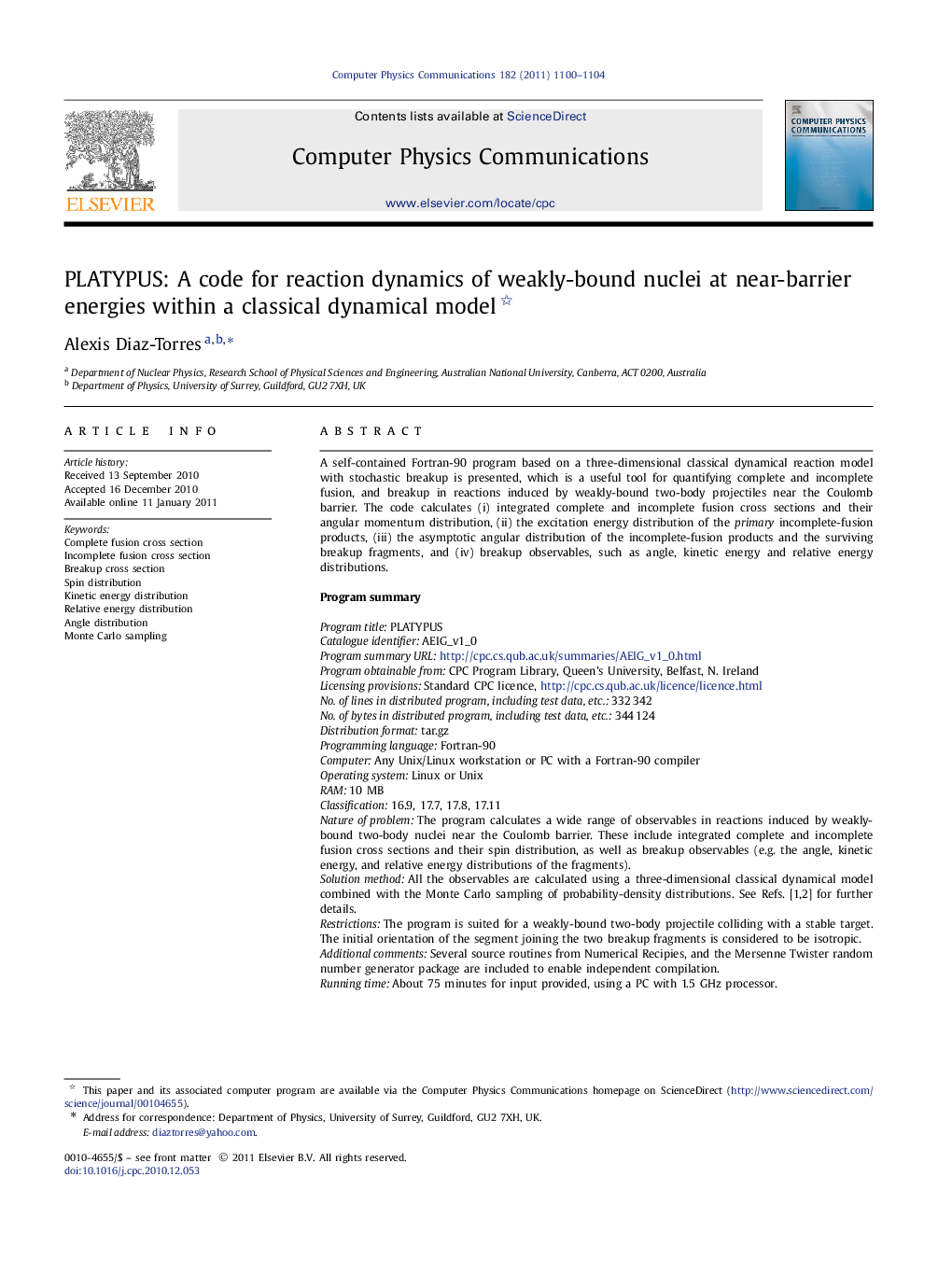| کد مقاله | کد نشریه | سال انتشار | مقاله انگلیسی | نسخه تمام متن |
|---|---|---|---|---|
| 501837 | 863655 | 2011 | 5 صفحه PDF | دانلود رایگان |

A self-contained Fortran-90 program based on a three-dimensional classical dynamical reaction model with stochastic breakup is presented, which is a useful tool for quantifying complete and incomplete fusion, and breakup in reactions induced by weakly-bound two-body projectiles near the Coulomb barrier. The code calculates (i) integrated complete and incomplete fusion cross sections and their angular momentum distribution, (ii) the excitation energy distribution of the primary incomplete-fusion products, (iii) the asymptotic angular distribution of the incomplete-fusion products and the surviving breakup fragments, and (iv) breakup observables, such as angle, kinetic energy and relative energy distributions.Program summaryProgram title: PLATYPUSCatalogue identifier: AEIG_v1_0Program summary URL:http://cpc.cs.qub.ac.uk/summaries/AEIG_v1_0.htmlProgram obtainable from: CPC Program Library, Queen's University, Belfast, N. IrelandLicensing provisions: Standard CPC licence, http://cpc.cs.qub.ac.uk/licence/licence.htmlNo. of lines in distributed program, including test data, etc.: 332 342No. of bytes in distributed program, including test data, etc.: 344 124Distribution format: tar.gzProgramming language: Fortran-90Computer: Any Unix/Linux workstation or PC with a Fortran-90 compilerOperating system: Linux or UnixRAM: 10 MBClassification: 16.9, 17.7, 17.8, 17.11Nature of problem: The program calculates a wide range of observables in reactions induced by weakly-bound two-body nuclei near the Coulomb barrier. These include integrated complete and incomplete fusion cross sections and their spin distribution, as well as breakup observables (e.g. the angle, kinetic energy, and relative energy distributions of the fragments).Solution method: All the observables are calculated using a three-dimensional classical dynamical model combined with the Monte Carlo sampling of probability-density distributions. See Refs. [1,2] for further details.Restrictions: The program is suited for a weakly-bound two-body projectile colliding with a stable target. The initial orientation of the segment joining the two breakup fragments is considered to be isotropic.Additional comments: Several source routines from Numerical Recipies, and the Mersenne Twister random number generator package are included to enable independent compilation.Running time: About 75 minutes for input provided, using a PC with 1.5 GHz processor.References:[1]A. Diaz-Torres, et al., Phys. Rev. Lett. 98 (2007) 152701.[2]A. Diaz-Torres, J. Phys. G: Nucl. Part. Phys. 37 (2010) 075109.
Journal: Computer Physics Communications - Volume 182, Issue 4, April 2011, Pages 1100–1104